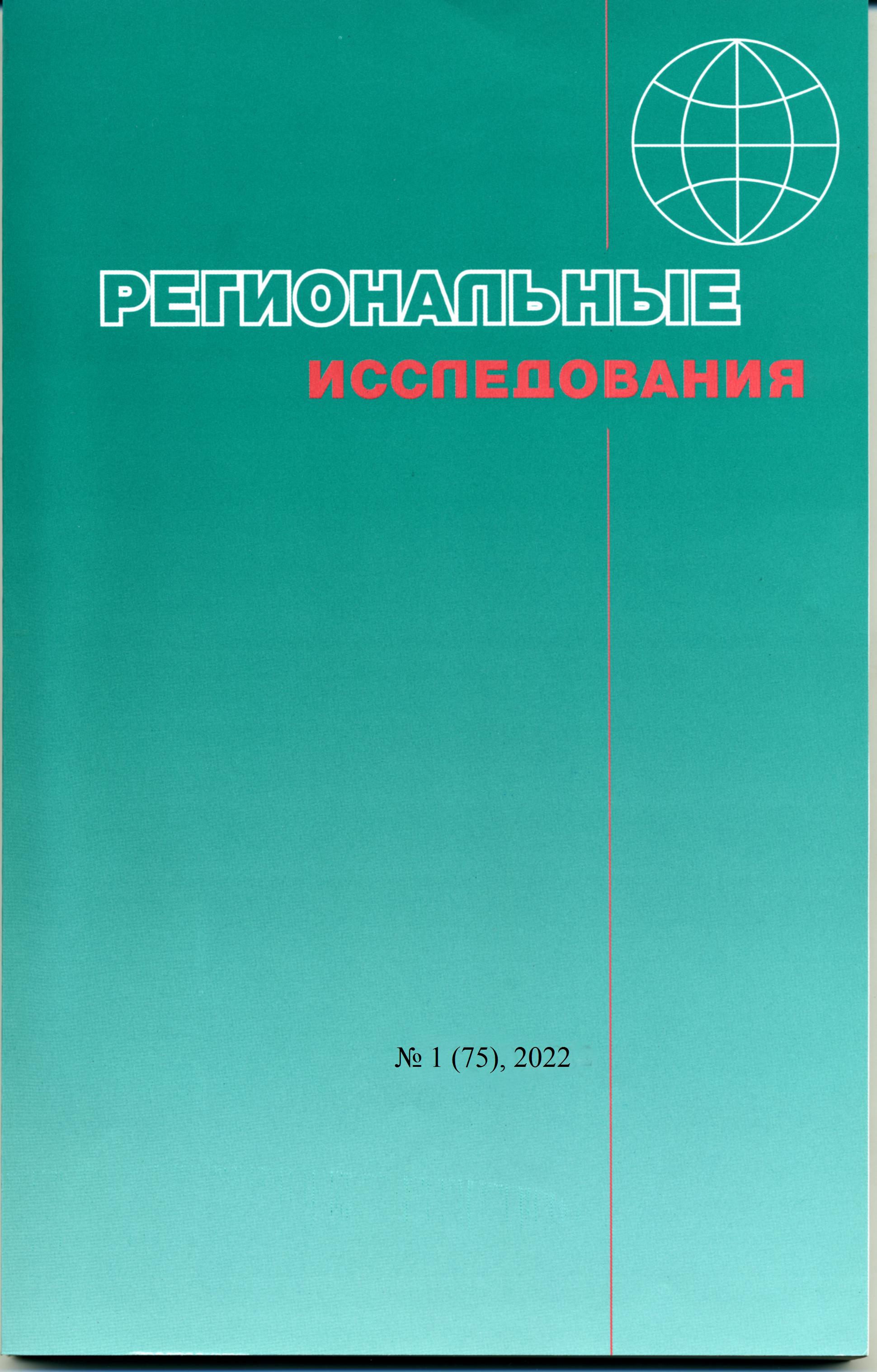Kuzavko A.S. Features of consumer market developing in the Moscow-Minsk inter-capital areas
DOI:
https://doi.org/10.5922/1994-5280-2022-1-8Keywords:
intercapital, consumer market, region, Russian-Belarusian border area, purchasing powerAbstract
The article is devoted to the study of a factor that can influence the consumer market of the region, but has not been fully explored so far. The hypothesis is being tested that development poles may arise in the capital regions, reducing the economic potential of the regions located between them. Close proximity to the capitals, relatively low time and financial costs of moving, attractive offers on the labor market in the capital regions, differentiation of the breadth and depth of the assortment on the goods and services market – these and other features characterize the economic system of the intercapital. In this study, the goal is to consider the dynamics of the statistical indicators of the consumer market of the Russian-Belarusian intercapital in comparison with national indicators. The retail trade turnover and the volume of paid services to the population were chosen as the main indicators of the consumer market. The lag of the analyzed indicators in the intercapital region from the national values is proved. It is also confirmed by the indicators of the solvency of the population, which are discussed in the article. Graphically shows the differentiation of some regions of central Russia and Belarus in terms of average per capita indicators of the consumer market. Comparison of statistical indicators shows that the intercapital position is a factor that can have a destructive impact on the consumer market of such regions.
Financing
The study was carried out with the financial support of the Russian Foundation for Basic Research, the project of 20-55-00002 Bel a "Inter-capital as a factor in the socio-economic development of the Russian-Belarusian border."
References
Агафонов Н.Т., Павчинский Б.Р. Москва – Ленинград: производственно-территориальная система? // Вест. Моск. ун-та. Сер. 5. География. 1972. № 4. С. 55–60.
Бабурин В.Л. Межстоличье: ядра концентрации и внутренняя периферия на стыке Белоруссии, России и Украины // География в школе. 2021. № 4. С. 14–19.
Вардомский Л.Б. Российское порубежье в условиях глобализации. М.: Либроком, 2009. 216 с.
Вертинская Т.С. Межрегиональные связи Беларуси со странами – членами ЕАЭС // Наука и инновации. 2019. Т. 1, № 191. С. 17–20.
Готтман Ж. Столичные города // Логос. 2013. № 4. С. 15–38.
Гурьянов Т.И. Совершенствование методики оценки состояния потребительского рынка // Казанская наука. 2012. № 7. С. 64–67.
Данильченко В.А. Факторы развития регионального потребительского рынка // Региональная экономика: теория и практика. 2013. № 6 (295). С. 39–44.
Днепро-Двинский регион в зеркале социологии / Под ред. А.С. Кузавко. Смоленск: Изд-во СмолГУ, 2019. 141 с.
Катровский А.П., Нижникова А.К. Российско-белорусское приграничье как межстоличный регион // Наука. Инновации. Технологии. 2021. № 1. С. 65–88.
Колосов В.А., Зотова М.В., Себенцов А.Б. Структурные особенности экономики и градиенты социально-экономического развития приграничных регионов Беларуси, России и Украины // Изв. РАН. Сер. геогр. 2014. № 5. С. 32–46.
Кузавко А.С., Катровский А.П., Ридевский Г.В. Эволюция потребительского рынка ДнепроДвинского региона. Смоленск: Изд-во СмолГУ, 2019. 160 с.
Морачевская К.А. Влияние государственных интеграционных процессов на развитие российско-белорусского приграничья // Стратегия развития приграничных территорий: традиции и инновации: монография / под ред. Л.Б. Вардомского, Л.И. Попковой. Курск, 2017. С. 267–274.
Нефедова Т.Г., Трейвиш А.И. Россия между двумя столицами: специфика территориальных сдвигов // Региональные исследования. 2013. № 4. С. 31–43.
Никитенко П.Г., Вертинская Т.С. Белорусско-российское приграничное сотрудничество как фактор формирования Союзного государства Беларуси и России // Неприкосновенный запас. 2006. № 3. С. 86–99.
Окунев И.Ю. Столицы в зеркале критической геополитики. М.: Изд-во «Аспект Пресс», 2020. 272 с.
Фольк О.В. Методика организации выборочного статистического наблюдения в розничной торговле: дисс. ... канд. экон. наук. Вологда, 2005. 164 с.
Hall P. The Changing Role of Capital Cities // Capital Cities: An International Perspective. Ottawa: Carleton University Press, 1993. P. 69–84.
Kolosov V.A., Klemeshev A.P., Zotova M.V., Sebentsov A.B. Russia-European Union Borderlands: Transboundary Gradients, Interaction and Current Challenges // International Journal of Economics and Financial Issues. 2015. Vol. 5. Spec. Is. P. 5–12.
Единая межведомственная информационно-статистическая система (ЕМИСС). Доля продаж через Интернет в общем объеме оборота розничной торговли. [Электр. ресурс]. URL: https://fedstat.ru/indicator/50236 (дата обращения: 19.12.2021).
Регионы Республики Беларусь. 2021. Том 1. [Электр. ресурс]. URL: https://www.belstat.gov.by/ofitsialnaya-statistika/publications/izdania/public_compilation/index_41220/ (дата обращения: 19.12.2021).
Регионы России. Социально-экономические показатели. 2020. [Электр. ресурс]. URL: https://rosstat.gov.ru/storage/mediabank/LkooETqG/Region_Pokaz_2020.pdf (дата обращения: 19.12.2021).
Смоленская область в цифрах. 2021: крат. стат. сб. Смоленск, 2021. 373 с.

